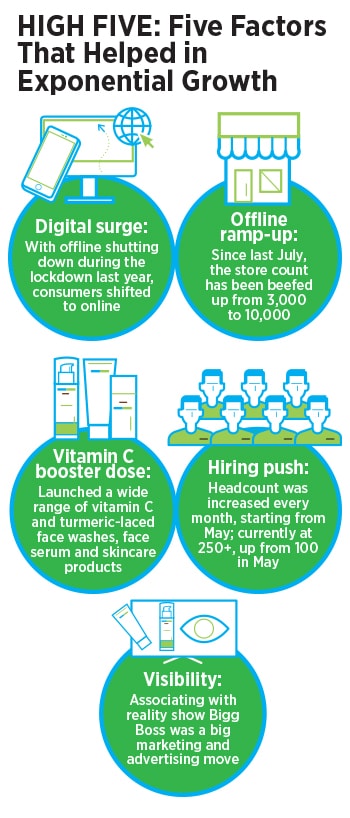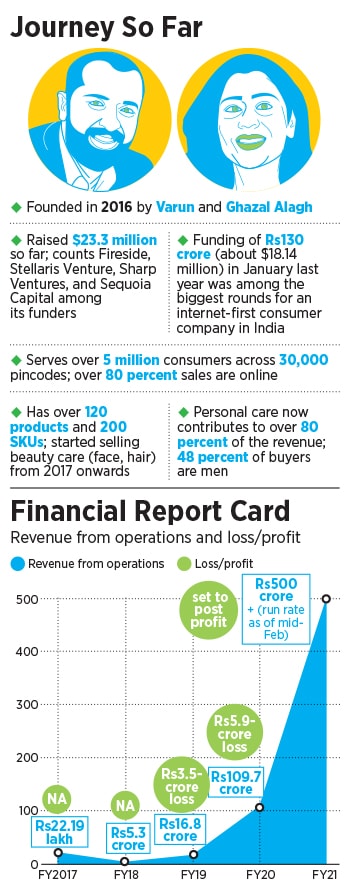
Beauty and the beast: How Mamaearth clocked 400% growth amid Covid-19
Mamaearth struggled with a big question—would it have to shutdown as the coronavirus outbreak quickly turned into a monster? This is the story of how the personal care brand not only survived but thrived during the pandemic
 Varun and Ghazal Alagh, the co-founders of Mamaearth, at their corporate office in Gurugram; Image: Amit Verma
Varun and Ghazal Alagh, the co-founders of Mamaearth, at their corporate office in Gurugram; Image: Amit Verma
In early March 2020, Varun and Ghazal Alagh had two big reasons to exude childlike excitement. First, the babycare product startup had completely transformed into a personal care brand in four years. Second, the venture had grown six times in 12 months. From Rs16.8 crore of operational revenue in FY19, Mamaearth was set to cross Rs100 crore a year later. “We were quite excited to enter the new financial year,” recalls Varun, co-founder of Mamaearth, which raised around Rs130 crore last January, making it the biggest funding round for an internet-first consumer company in India.
Then came the pandemic, lockdowns, and a twist in the tale. “We thought our dream run was coming to an end,” says Varun. “The pandemic was fast turning into a monster,” chips in Ghazal. There was widespread uncertainty, warehouses shut down and operations came to a halt. The first silver lining, though, emerged after a few days. Babycare, and other segments, were included among essential commodities in April. As the co-founders started taking baby steps towards restarting operations, the big question was: Can Mamaearth survive the pandemic? The couple, along with the team, started hunting for growth triggers.

Almost a year later, growth seems to have come in style, with operational revenue almost trebling in nine months over the previous 12 months—from Rs109.7 crore in FY20 to Rs300 crore in December. By mid-February, Mamaearth had a top line of Rs500 crore. The icing on the cake has been the bottom line. From a loss of Rs5.9 crore last fiscal, the brand is set to post its maiden profit. Varun decodes the magic. The inspiration to fight the pandemic beast, he lets on, came from Formula One legend Ayrton Senna. ‘You can’t overtake 15 cars in sunny weather, but you can when it’s raining’, the Brazilian racing ace once remarked. The pandemic was like rain for Mamaearth.
Varun explains. During the early months of the lockdown, when offline retail remained shuttered across the country, consumers had no choice but to shop online. A quick adoption to the digital way of life meant two things for the direct-to-consumer brand. First, the less-cluttered online space gave it a head-start over its offline rivals who were still grappling to put together an ecommerce strategy. Second, a massive surge of new buyers started coming from Tier II and beyond.








